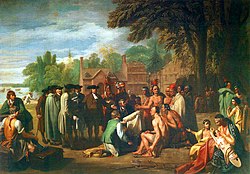| Indian country | |
|---|---|
| |
 | |
| Category | Political divisions |
| Location | United States |
| Number | 574 federally recognized tribes, 326 Indian reservations, 229 Alaska Native tribal entities (as of 2025) |
| Government | |
| Subdivisions | |
Indian country is any of the self-governing Native American or American Indian communities throughout the United States. Colloquially, this refers to lands governed by federally recognized tribes and state recognized tribes. The concept of tribal sovereignty legally recognizes tribes as distinct, independent nations within the United States. As a legal category, it includes "all land within the limits of any Indian reservation", "all dependent Indian communities within the borders of the United States", and "all Indian allotments, the Indian titles to which have not been extinguished." Native Tribes which are not recognized by the government can seek recognition. Multiple tribes that had their relationship with the federal government terminated have not regained federal recognition.
Contents
- Legal classification
- Related and historical meanings
- Between the Appalachians and Mississippi
- West of the Mississippi
- American military usage
- See also
- References
The American military has since applied the term to sovereign land outside its control, including land in Vietnam.
